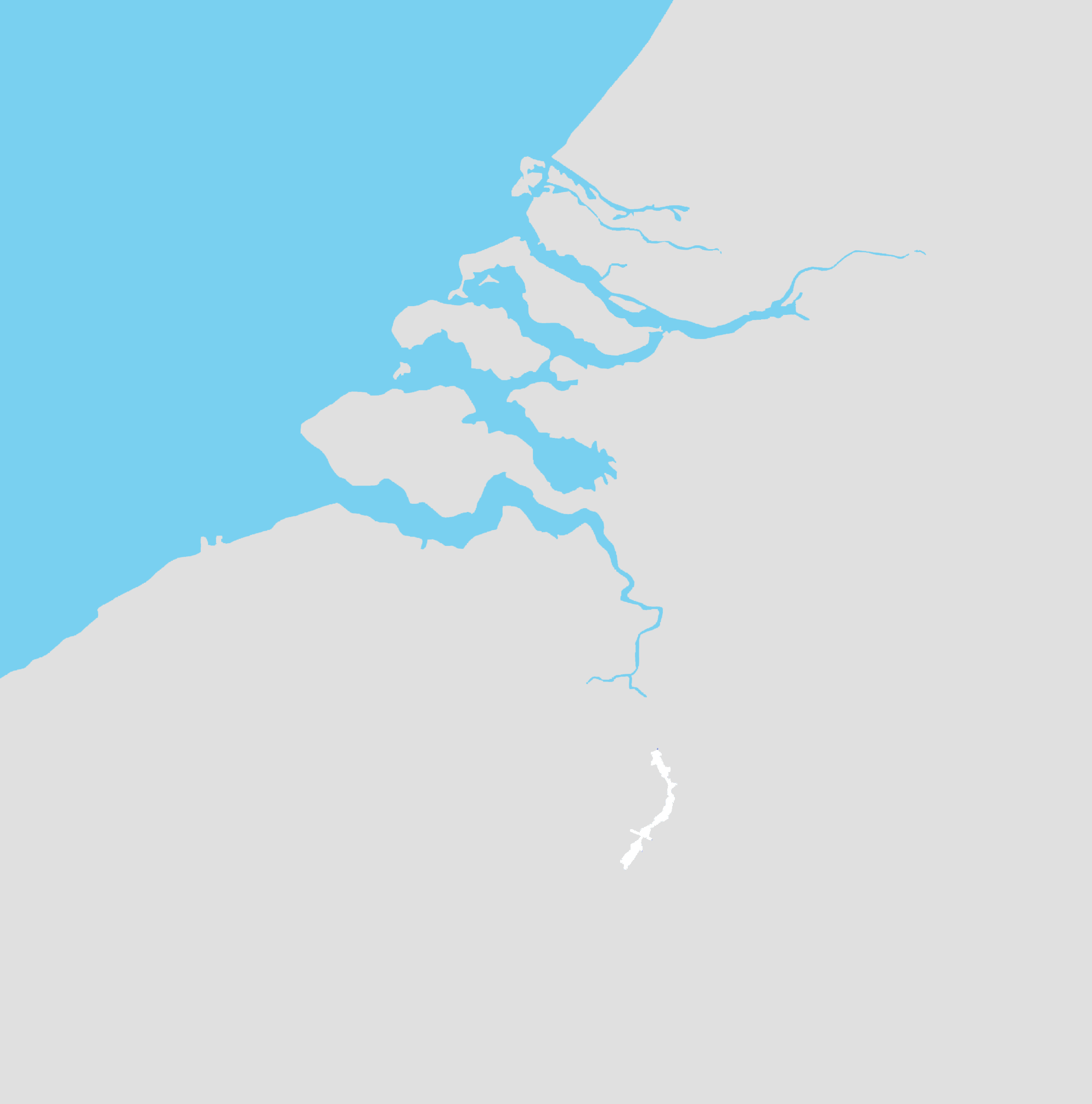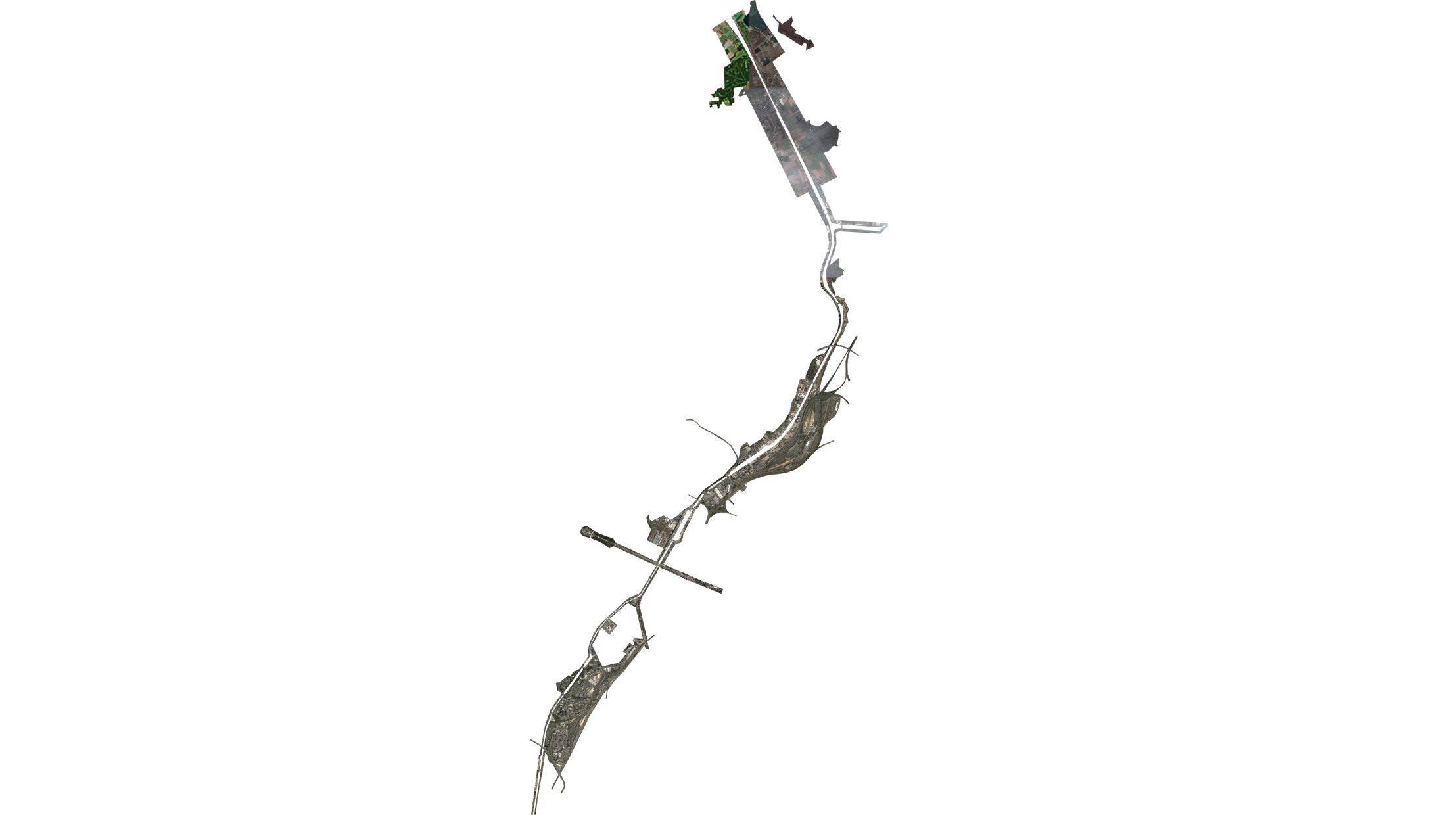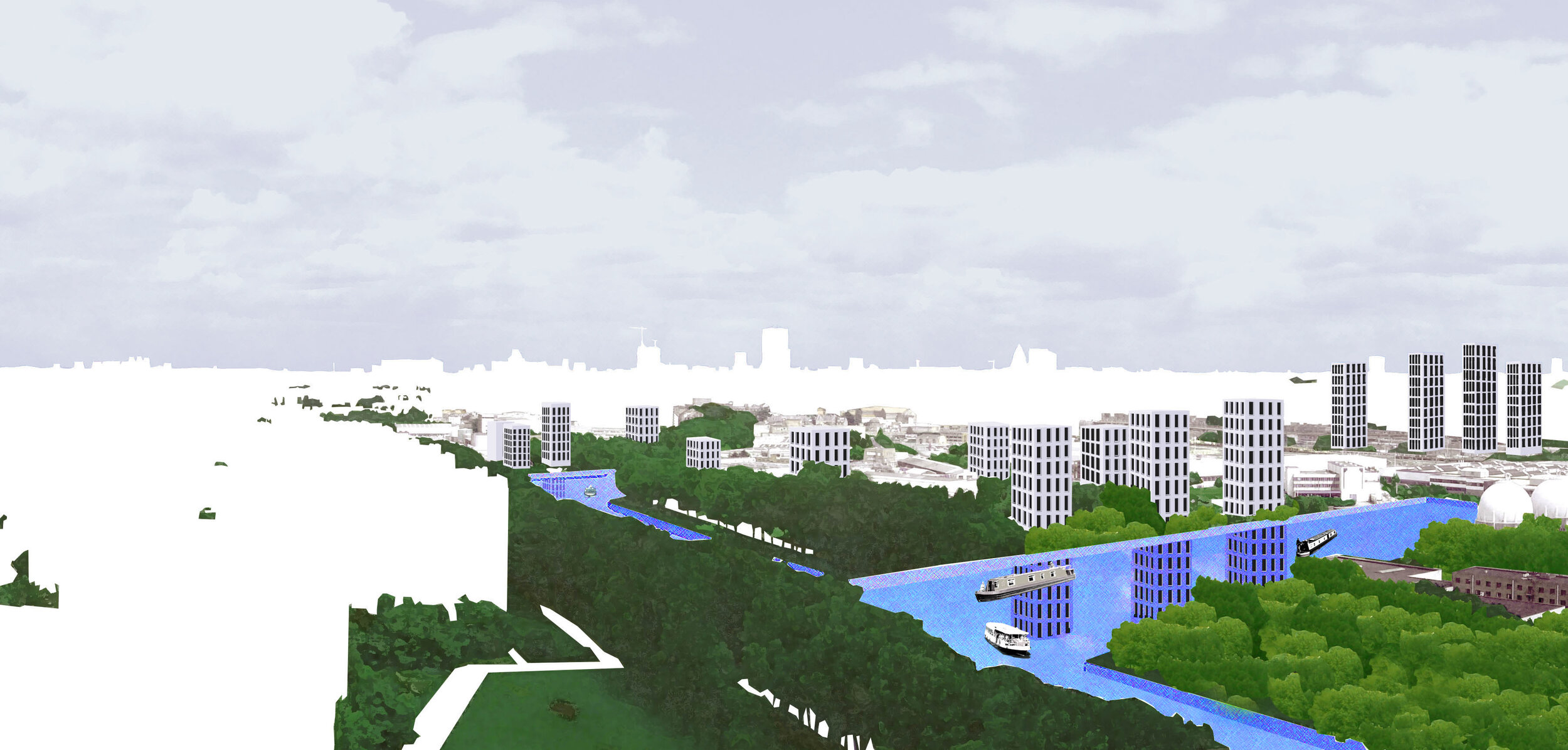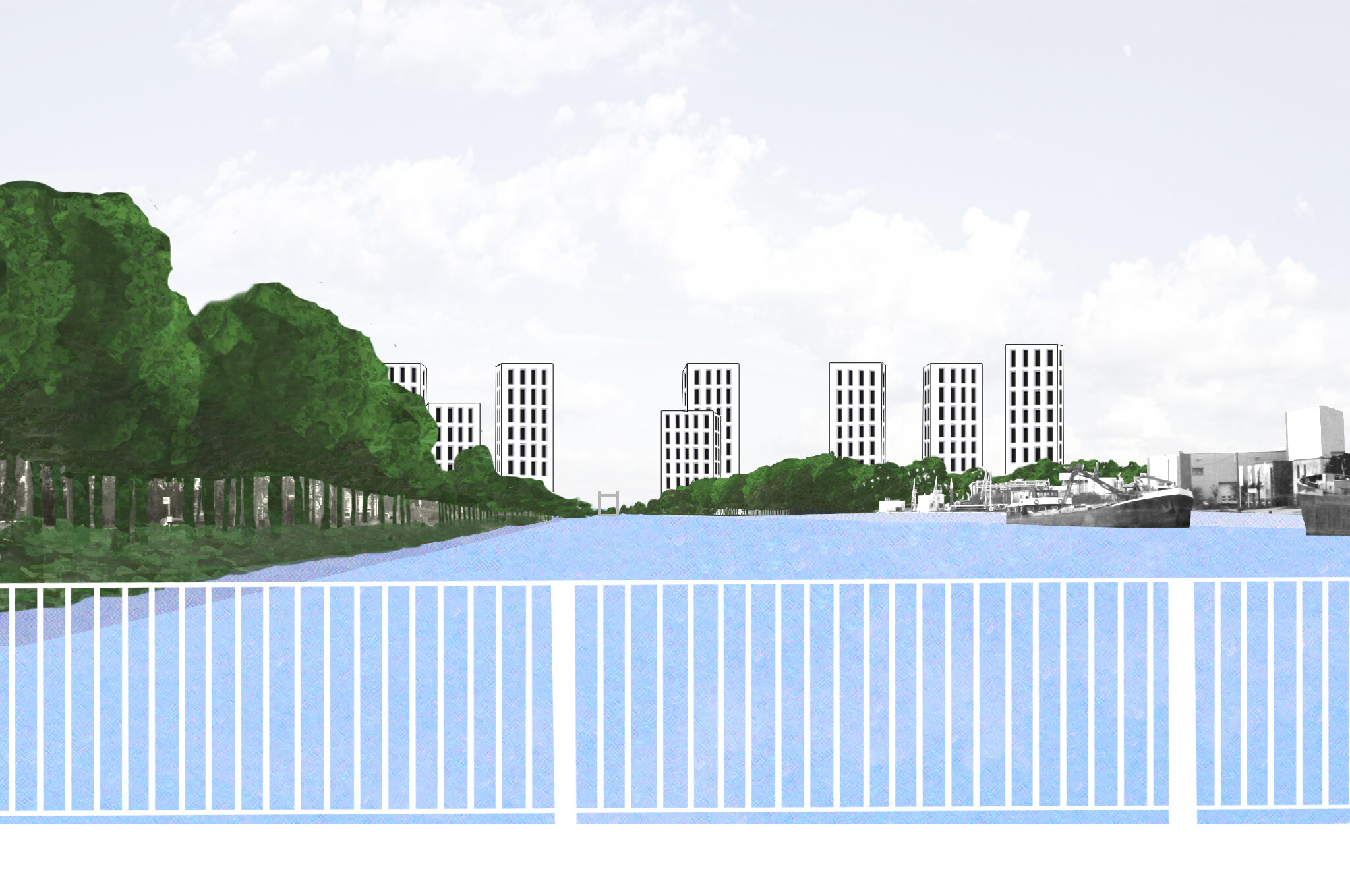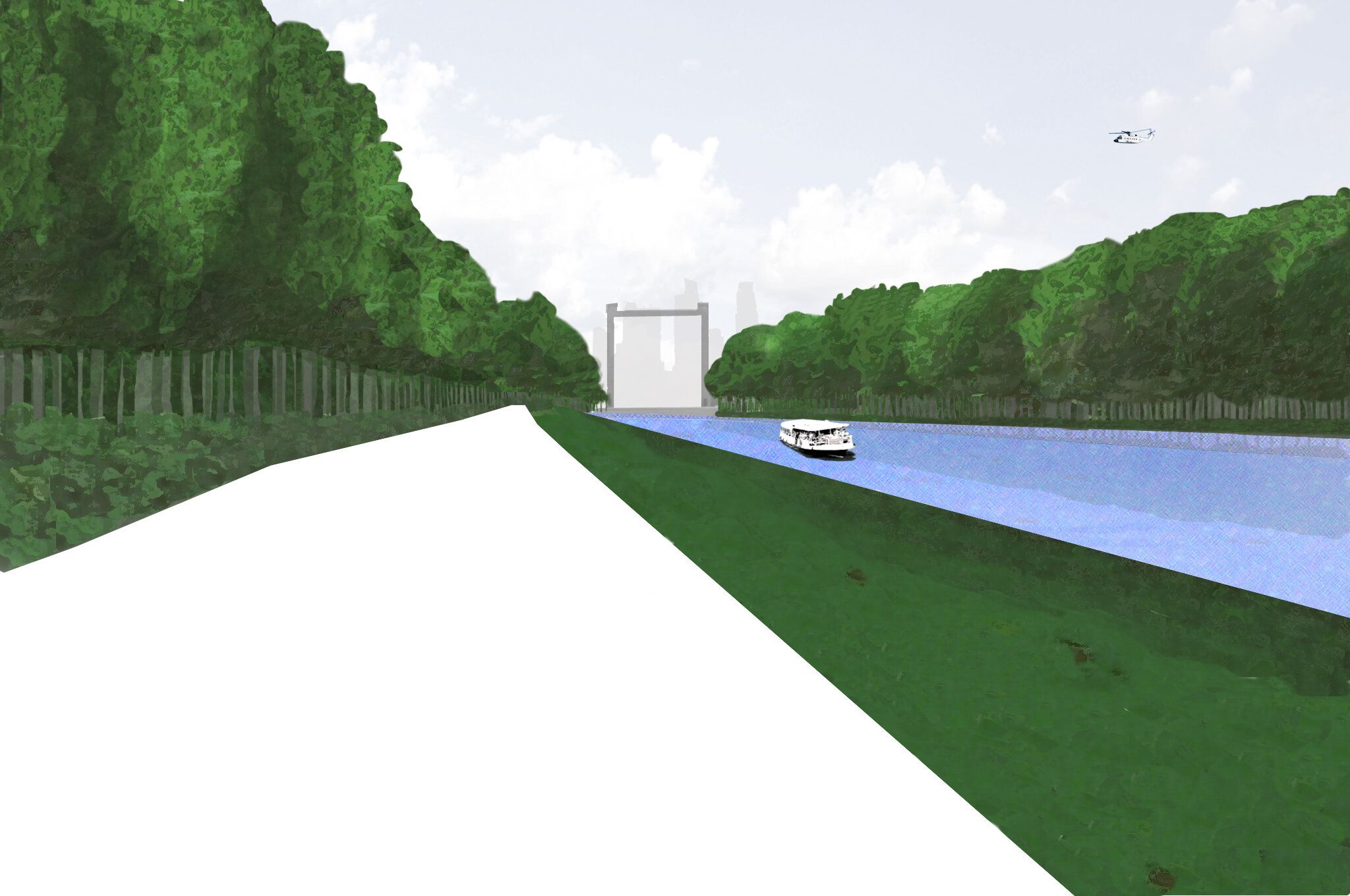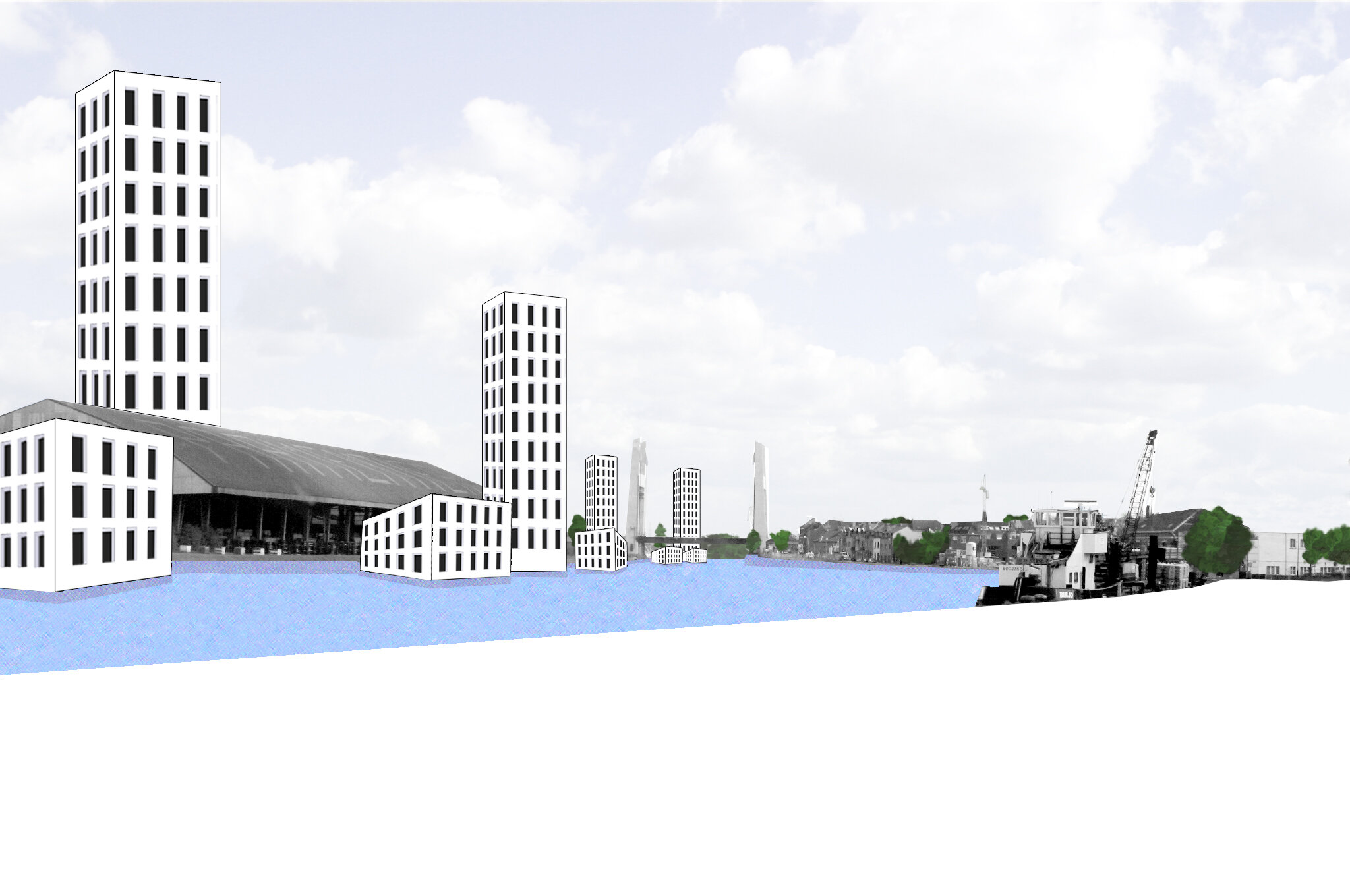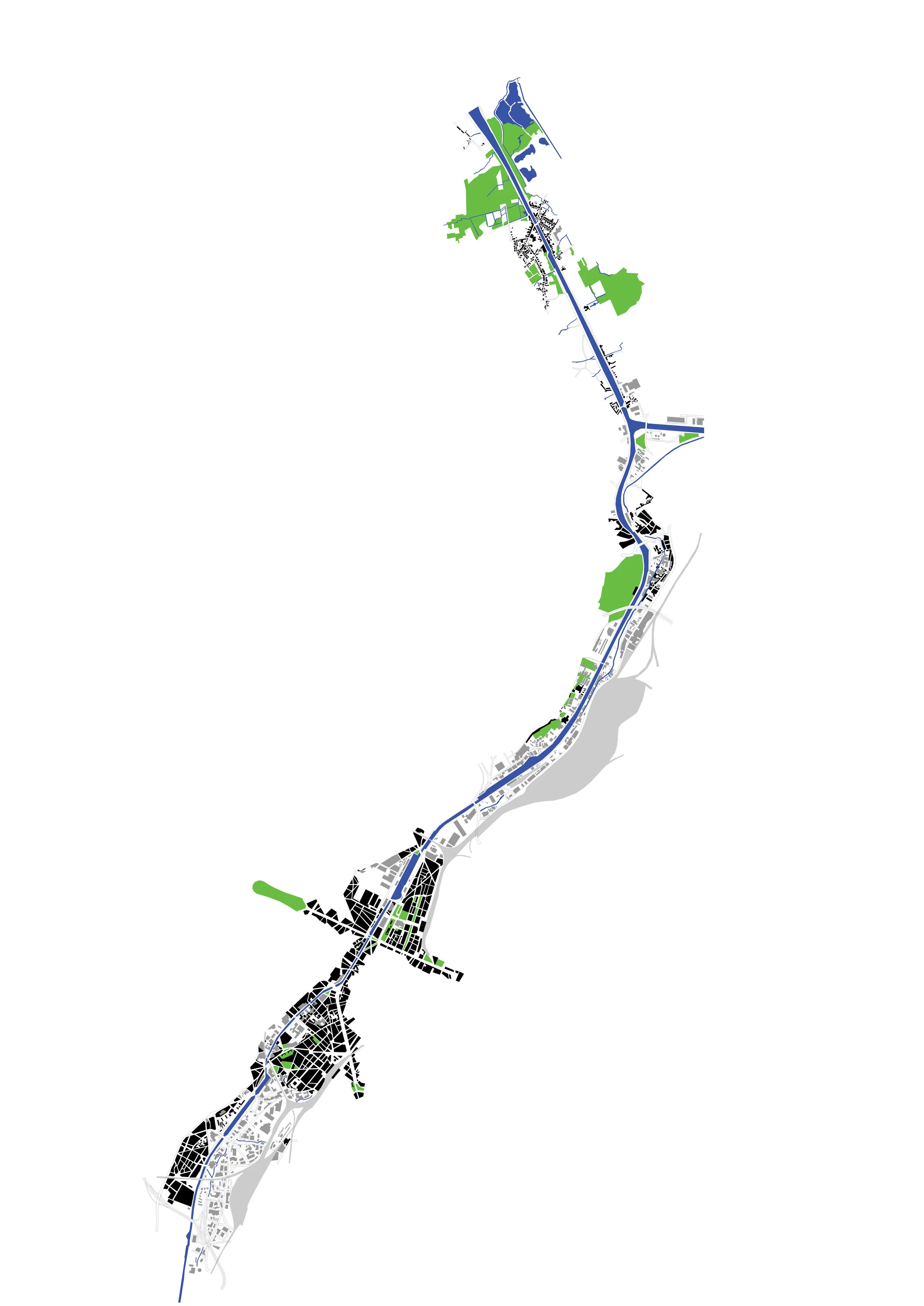STREAMCITY
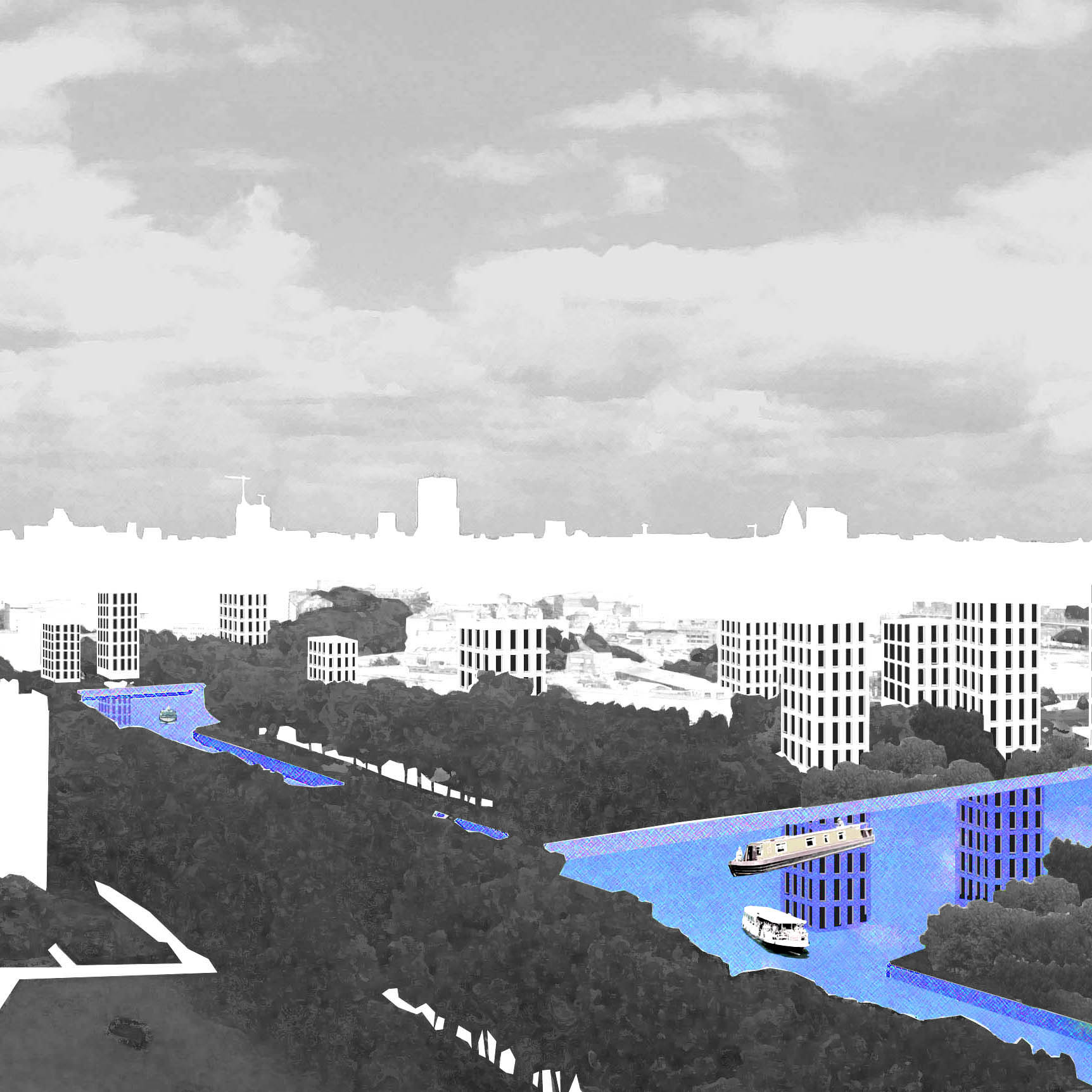
STREAMCITY
A research initiative that explores how Brussel’s canal can drive resilient urban growth in the 21st century
Year → 2006
Status → Research
Team → de baes architects & Bart Verstappen
How can the canal shape the future of Brussels and its metropolitan region? How can the waterway spur development, contribute to the city’s culture of heterogeneity and diversity, promote connectivity within the region and beyond, and usher in a greener urban future?
These are the questions we pose in Streamcity, a research initiative exploring ways to amplify the canal's role as an engine of economic and urban growth. We propose a set of interventions along the canal that intensify the generative relationship between land and water.
Regional transit
A transit hub on the canal between the airport and city connects water, rail, and air traffic positions the canal as an alternative to automobile travel along the highway. The hub also includes a second high-speed train station, alleviating over-congestion at the station in the centre of the city and adding much-needed capacity.
High-density suburban housing
Outside the city, we propose lining the canal with high-density housing developments that offer quick access to the city centre by water, alleviating urban sprawl.
A new urban centre
In the city itself, we propose using space currently allotted to roadways to widen the canal, supporting greater water traffic and minimizing car traffic. A vehicular boulevard that crosses the canal is transformed into a new public square, creating a new city centre. The canal is also extended to the high-speed rail station in the city, making it a multi-modal hub where rail, boat, bus, and foot traffic meet.
A floating village outside the city
In the south of the city, we propose the canal is broadened to create floating docks that can support a range of programs from housing to social spaces and civic amenities. The new zone mediates between the city and the suburbs and takes advantage of the natural stopping point where boats enter locks to continue further south.

